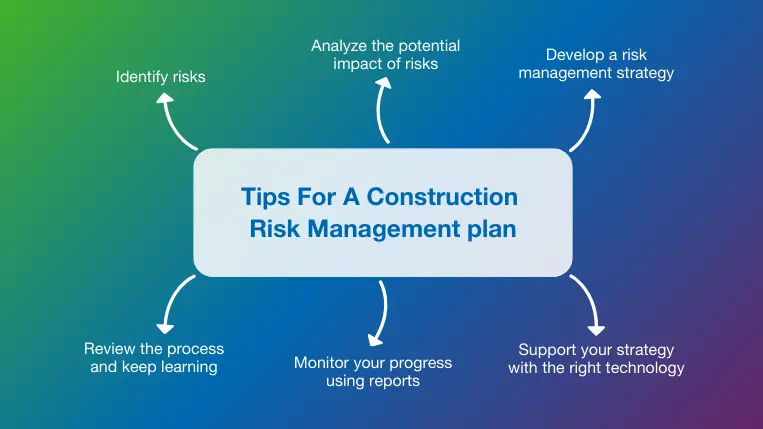Addressing the Unseen Risks: The Importance of Risk Management in Tech
Addressing the Unseen Risks: The Importance of Risk Management in Tech
Blog Article
Exploring the Relevance of Risk Management for Effective Decision-Making Approaches
In the detailed world of organization, Risk Management becomes a crucial aspect in the decision-making process. The capability to identify prospective hazards and chances, and plan accordingly, can mean the difference in between success and failure. With devices such as SWOT and PESTEL, companies are geared up to make enlightened choices, promoting resilience and flexibility in an ever-changing atmosphere. Wondering how this works? Allow's unpack the characteristics additionally.
Recognizing the Idea of Risk Management
Risk Management, a critical component in decision-making, is usually misunderstood or oversimplified. Typically, it describes the recognition, analysis, and prioritization of risks to reduce, keep track of, and manage the likelihood or effect of unfavorable occasions. It's not just concerning preventing adverse end results, yet additionally regarding acknowledging prospective chances. Risk Management includes self-displined and organized techniques, using data and informative analyses. It requires a detailed understanding of the company's context, purposes, and the possible dangers that can obstruct them. From economic unpredictabilities, lawful liabilities, calculated Management errors, to mishaps and natural disasters, it addresses various dangers. Significantly, efficient Risk Management is not stationary; it's a continuous, positive procedure that advances with altering scenarios.
The Duty of Risk Management in Decision-Making Processes
In the world of critical planning and business operations, Risk Management plays an indispensable function in decision-making procedures. Risk Management hence comes to be a crucial tool in decision-making, helping leaders to make enlightened choices based on a comprehensive understanding of the dangers included. Risk Management offers as a crucial element in the decision-making processes of any organization.

Just How Risk Management Enhances Strategic Planning
In the context of strategic preparation, Risk Management plays a pivotal role. Launching with the recognition of prospective risks, it further expands to the execution of Risk mitigation measures. The function of Risk Management is not fixed however dynamic, as it requires continuous monitoring and adjusting of strategies.
Recognizing Prospective Risks

Carrying Out Risk Reduction
Risk reduction techniques can vary from Risk avoidance, Risk transfer, to run the risk of reduction. Each approach must be customized to the certain Risk, considering its potential impact and the company's Risk tolerance. Reliable Risk mitigation calls for a deep understanding of the Risk landscape and the potential see page impact of each Risk.
Tracking and Changing Strategies
Though Risk reduction is a vital action in critical planning, continual tracking and change of these techniques is just as essential. This continuous process enables companies to identify brand-new dangers and reassess existing ones, ensuring the carried out approaches continue to be efficient in the ever-changing service atmosphere. It also gives an opportunity to evaluate the success of the Risk Management steps, that site allowing modifications to be made where necessary, further enhancing critical planning. Efficient surveillance and change need using analytics and vital performance indications (KPIs) to gauge efficiency. These tools provide valuable data-driven insights that can notify strategic decision-making. Surveillance and changing Risk Management methods is an essential element for enhancing an organization's resilience and tactical planning.
Case Studies: Successful Risk Management and Decision-Making
In the world of organization and financing, successful Risk Management and decision-making commonly serve as the columns of thriving ventures. These situations highlight the worth of astute Risk Management in decision-making procedures. These situations underscore the crucial role of Risk Management in calculated decision-making.
Tools and Methods for Reliable Risk Management
These tools, such as Risk registers and warmth maps, aid in recognizing and evaluating potential threats. Risk action strategies, an essential part of Risk Management, include approving, preventing, moving, or mitigating threats. With these techniques and devices, decision-makers can navigate the complicated landscape of Risk Management, consequently facilitating notified and effective decision-making.
Future Fads in Risk Management and Decision-Making Approaches
As we discover the huge landscape of Risk Management, it ends up being evident that the techniques and tools made use of today will certainly continue to evolve. The concept of Risk society, where every member of an organization is mindful and involved in Risk Management, will certainly gain a lot more prestige. These trends herald a more inclusive and positive technique in the direction of Risk Management and decision-making.
Final thought

Risk Management hence ends up being a vital device in decision-making, helping leaders to make educated choices based on a detailed understanding of the dangers included. Risk mitigation methods can vary from Risk evasion, Risk transfer, to run the risk of reduction (importance of risk management). Efficient Risk mitigation needs a deep understanding of the Risk landscape and the potential impact of each Risk. Risk action strategies, a vital element of Risk Management, involve approving, staying clear of, transferring, or mitigating threats. The principle of Risk society, where every participant of a company is mindful and involved in Risk Management, will certainly get much more importance
Report this page